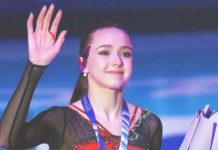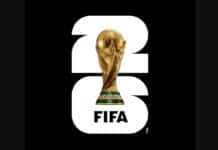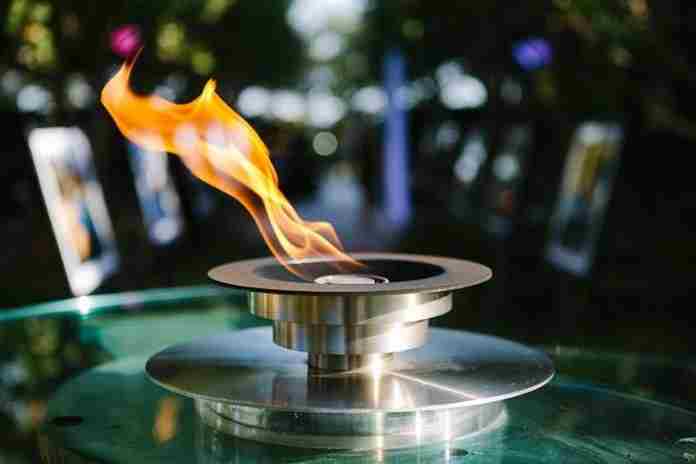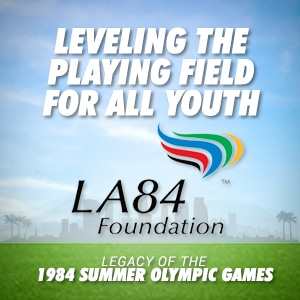(★ Friends: Very, very grateful to have received 27 donations over the past month toward our server and technical support costs, which has covered more than half of our current bill. But we could use your help to cover the rest; if you wish, please donate here. Thank you.★)
Earthquakes are a known feature of the Los Angeles area.
There is fear and worry when the ground shakes even a little between Santa Monica and Indio, a perhaps a precursor to The Big One. There was such a quake last week, but it drew far too little notice.
The 11 major professional sports teams in the Los Angeles area joined together in “The A11iance: Los Angeles,” a five-year joint commitment to support “the Play Equity Fund’s social justice movement in communities across greater Los Angeles, and in Orange County amplifying the work of Accelerate Change Together (ACT) Anaheim.”
This includes Major League Baseball’s Angels and Dodgers, Major League Soccer’s Galaxy and Los Angeles Football Club, the NBA’s Clippers and Lakers, NFL’s Chargers and Rams, the NHL’s Ducks and Kings and the WNBA’s Sparks.
This is yet another legacy of the 1984 Olympic Games.
Huh?
The Play Equity Fund is a project of the LA84 Foundation – the living legacy of the Los Angeles Olympic Organizing Committee – under the leadership of Chair Debra Duncan, a critical member of the LAOOC executive team that staged in the 1984 Games, and President and Chief Executive Renata Simril.
LA84 commissioned a first-ever Youth Sports Survey in 2016, showing what sports kids play, how often they play and who is not playing in the greater Los Angeles area and updated it in 2018. The latest data showed the need for the Play Equity movement in Los Angeles County:
● 82.3% of all county youth, ages 6-17, participate in sports. That sounds pretty good until you consider that almost 18% did not participate at all.
● Youth activity is related to parental activity levels. Children in households with regularly-active parents had a sports-participation rate of 90%. But those from households with occasionally-active or inactive parents participated at just 77%.
● Children of families with annual incomes greater than $150,000 participate at a rate of 90%, while only 71% of those from households earning below $35,000 play sports. But, the interest levels were about the same!
● 79% of Los Angeles County youth are enrolled in P.E./physical activity classes, down from 88% in 2016, with Hispanic/Latino and African-American households experiencing the biggest decline among race/ethnic groups.
● 53% participated in sports at public fields, pools or gyms, with 33% at schools or colleges and 13% at private facilities.
The role of sports-at-school was underscored emphatically. The policy recommendations that come from the study are quite clear:
“For funders and policy makers seeking to make youth sports universally available, the survey responses from low-income households are instructive. It is clear that for low-income parents cost remains an issue. Parents of young athletes must meet the costs of registration, equipment, travel, and in some cases child care and lost work time.
“These parents’ call for more school-based sports programs represents a rational solution to closing the Play Equity Gap. School sports typically provide a lower-cost option than other sport programs. Moreover, they require less travel and therefore lower transportation costs plus fewer lost work hours. Schools also provide a built-in sports infrastructure, a relatively safe environment, and a ready-made population of potential athletes. In short, school is an ideal setting for meeting kids where they are.”
This is a perfect match with the community outreach of the area’s 11 professional sports teams as well as the Ready! Set! Gold! outreach program using Olympic and Paralympic athletes as teaching and inspiration models in the Los Angeles Unified School District. This program is yet another Los Angeles Olympic legacy, created by the Southern California Committee for the Olympic Games as part of its bid for the 2016 Olympic Games, and administered in conjunction with the Los Angeles Sports Council, with support from Samsung and the Foundation for Global Sport Development.
And another validation of the 1990s decision to maintain the LA84 Foundation as a permanent entity.
“Our goal is to put bats and balls in the hands of boys and girls.”
That was the primary purpose of the Amateur Athletic Foundation of Los Angeles, according to its founding chair, John Argue, the man most responsible for bringing the Games of the XXIIIrd Olympiad to Los Angeles.
The AAF – as the LA84 Foundation was originally known – was initially designed to distribute the Los Angeles share of the $232.5 million surplus from the organization of the Games over a decade following the Games. But it became clear over time that the organization had much more to give to the community as a permanent organization and in June 2007, changed its name to the LA84 Foundation to showcase its association with the 1984 Games.
From the original transfer of $93.5 million from the LAOOC in 1985, the Foundation has spent more than $176.0 million on direct grants, sports programs and facilities in the succeeding 35 years and still held about $154.3 million as at the end of 2017. That spending does not count the enormous contribution of the Ziffren Sports Resource Center, perhaps the finest sports library in the United States, with an average of 6.6 million pages downloaded annually from its remarkable digital holdings.
In her December 2017 essay, “My New Year’s Resolution: Close the Play Equity Gap,” Simril put the challenge this way:
“Hiding in plain sight, there is a national crisis in play. I find that many people who don’t have young kids or don’t live in underserved communities aren’t aware that the opportunity to play or join a team isn’t a natural extension of childhood anymore, as so many of us remember it being when we grew up. A chasm has formed between the haves and the have-nots when it comes to sports and the basic need to run or jump, swim or compete…. or simply move.
“I am the President and CEO of the LA84 Foundation. We are a youth development organization that transforms lives and communities through support of youth sports and structured play programs. Some believe sports are just a game. Others fresh air, recreation and fitness. But that’s only part of the story. The lessons of sport and play are the lessons of life: “developing the body, mind, and spirit; the pursuit of excellence, the nurturing of character, and the call to personal integrity and responsibility…” (Jack Swarbrick, Director of Athletics, University of Notre Dame).”
Revolutions take time, as Simril noted, and that the more who get involved, the faster that problems can be solved. With the formation of “The A11iance: Los Angeles,” she now has 11 new, powerful partners to help, a continuation of the legacy of a suddenly not-so-far-away Olympic Games that opened 36 years ago a week from this coming Tuesday.
Rich Perelman
Editor
You can receive our exclusive TSX Report by e-mail by clicking here. You can also refer a friend by clicking here.

















